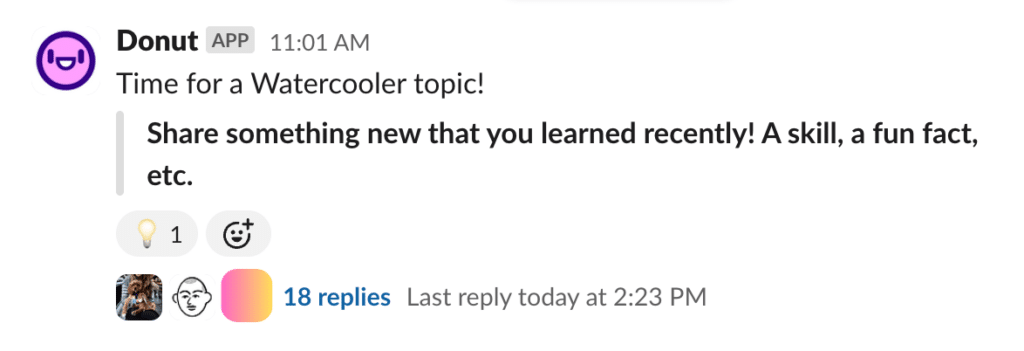For many teams, Slack is where work happens. As the central hub of workplace communication and collaboration, it’s fast-moving and full of activity.
You may already use Slack to support your people programs — welcoming new hires, recognizing milestones, and keeping the team connected. But if these touchpoints aren’t consistent or strategic, they can fall short of their potential to improve performance.
Here’s how to turn routine Slack messages into strategic wins that strengthen your team.
Slack Moment #1: Welcoming New Hires
A great onboarding process helps new hires deliver their best work and improves long-term retention. Welcome messages are a great way to set the tone for onboarding and help new hires feel included from day one. To make a great first impression, design welcome questions that are:
- Consistent across teams and roles
- Paired with a clear next step, like an intro prompt or buddy connection
- Visible to leaders or personalized by team leads
- Followed by moments that build support beyond Week One
What to try:
- Automate key Slack messages in your onboarding flow — but customize them to reflect your team’s tone, not generic copy.
- Add a prompt encouraging the new hire to share a fun fact, favorite emoji, or hobby in their intro post.
- Assign onboarding buddies through Donut, and include a template for what that first chat should cover.

Slack Moment #2: Celebrating Work Anniversaries
Work anniversaries are a meaningful way to show appreciation and highlight long-term impact — and a chance to have some fun as a team. Make the most of your anniversary celebrations by ensuring they are:
- Visible to the whole team — not just a manager or small group
- Supported by leadership participation or acknowledgement
- Paired with recognition tools like Donut Shoutouts or company-wide rewards
- Designed to prompt more than a 👍 emoji reaction
What to try:
- Set up Donut Celebrations to post automatically, but review your messages regularly. Do they reflect your team’s tone and values, or are they placeholders?
- Try a weekly digest if you’re managing a larger team or want to avoid celebration overload
- Encourage team leads to follow up with a Shoutout or note that highlights what the person brought to the team that year — even one sentence adds a lot of value.

Slack Moment #3: Ongoing Connection and Recognition
Day-to-day connection often happens in bursts — a project thread, a standup update, or a kudos post. But these moments don’t always extend across functions or levels, and they can quickly lose momentum.
To keep moments of recognition front and center:
- Create space for teammates to connect outside their regular roles
- Recognize great work asynchronously, not just in meetings
- Use conversation-starters that drive thoughtful engagement
What to try:
- When running Intros with Donut, experiment with rotating pair logic. Match people across departments, time zones, or tenure to create new connections.
- Create a regular cadence for recognition by scheduling a weekly or biweekly Shoutouts prompt in Slack. You can use Donut to post a message that encourages the team to recognize recent wins or contributions. Making it a habit surfaces impact consistently.
- For Watercooler prompts, tailor questions to your team’s actual work and interests. Skip broad or low-substance questions and explore these:
- “What’s something you learned from a teammate recently?”
- “What’s one thing outside of work you’re really into right now?”
- “What’s a small win from your week, work or otherwise?”
- Encourage leaders to occasionally join an Intro or respond to a Watercooler thread. It normalizes participation and strengthens team connection beyond direct reports.

Final Thoughts
The teams doing this well aren’t adding more to their plates. They’re approaching the same touchpoints with more clarity and intention. That’s what builds trust, drives performance, and helps people feel recognized in ways that actually stick.
With the right structure in place, Slack touchpoints become more than one-off gestures. They connect people. They highlight great work. They give managers better information. And they help create a more consistent, high-performing employee experience across the board.
Drive performance with recognition that works
Shoutouts makes it easy to highlight great work and keep your team motivated in Slack.
